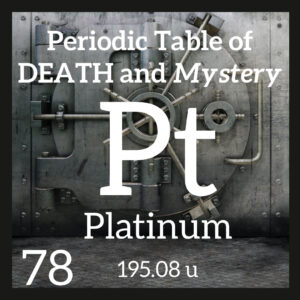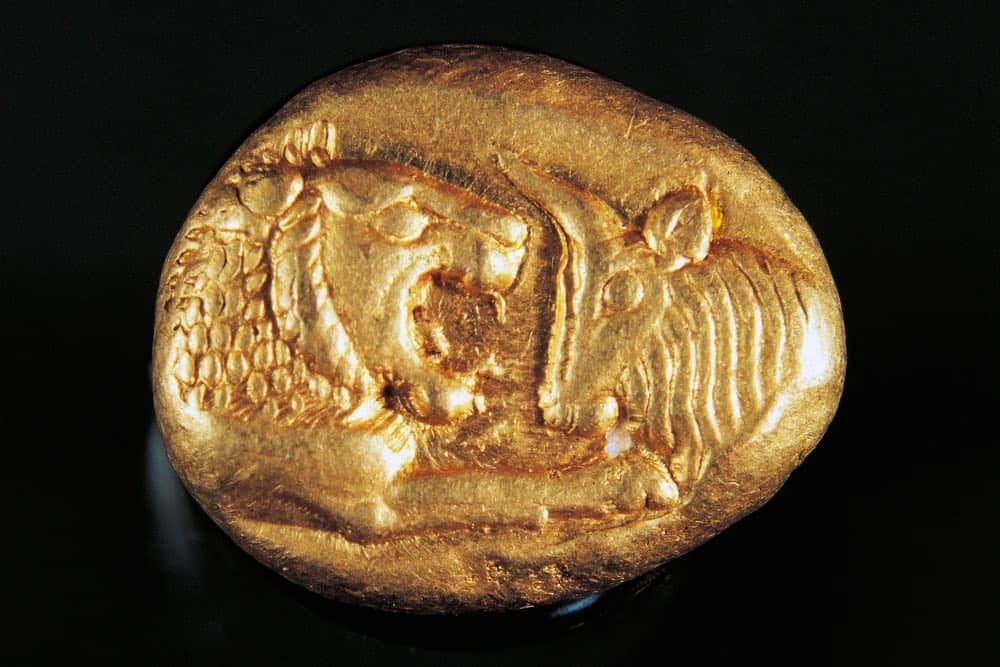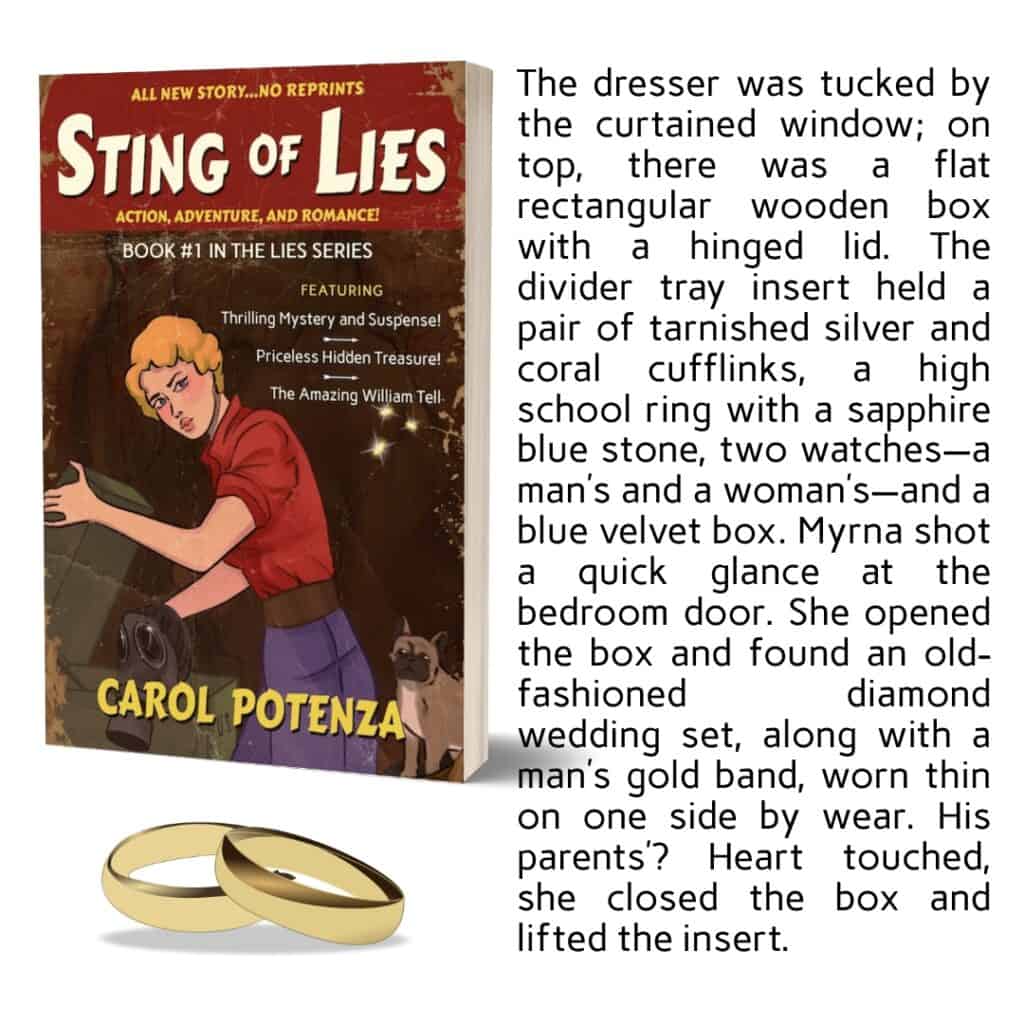Platinum. “Rare, pure, eternal.” (1) A jeweler’s slogan that perfectly describes this periodic table element, mostly because they’re interested in charging a bit more for platinum (Pt) jewelry, even though it is actually LESS expensive to buy in bar and coin form than gold (2). You didn’t know you could buy platinum coins? Probably because gold (Au), silver (Ag), nickel (Ni), and copper (Cu) were mostly used as “money metals” historically. In fact, the first archeologically known “coins” were precisely weighed gold pieces stamped with a lion and bull dated to the 500s BCE in Asia Minor as payment to Greek Mercenaries (6). Platinum wasn’t really used for a number of reasons, the first one being that it was relatively unknown to Western Civilization. Found in Mexico and Central America, Pt was known to pre-Columbian cultures natives and used in making precious metal artifacts. In the Western world, it was first described by the Italian Julius Scaliger in 1557 as a metal that “which no fire nor any Spanish artifice has yet been able to liquefy” (3, 4, 5).

And that leads us to the second reason Pt wasn’t used for coinage—it has a melting temperature of ridiculous: 1768.2°C, or 3214.8°F (7). In comparison, gold’s melting temp is 1064.18°C, or 1947.52°F (8), so 700°C (and 1267°F) lower than Pt. And silver’s melting temperature of 961.78°C or 1763.2°F (9). This made Pt difficult to smelt—it had to be hammered, which is the third reason Pt wasn’t used for coinage.
Pt is so dense and hard, it was difficult to stamp or hammer coins and form jewelry. This is also one reason Pt tends to be more expensive than gold in rings and things at the jewelers. Let’s once again compare Pt to Au in terms of weight and structure of the pure metals. Au is actually heavier than Pt on the periodic table: Au has an atomic number (protons in the nucleus) of 79, Pt, 78. And Au has an atomic mass (protons and neutrons) of 196.97, whereas Pt’s is 195.08. But Pt density—how many atoms pack together in the pure crystalline 3D structure—is 21.5 g/cm3. Au’s density is 19.3 g/cm3. That’s 2.2 grams less gold in the same volume when compared to Pt.
But this hardness and density also makes Pt very durable and scratch resistant, which is why Pt wedding rings are prized. If you check out your mother and father’s or grandmother and grandfather’s gold wedding rings in marriages that spanned till-death-do-us-part decades long, you might notice that the backs are worn poignantly thin. And if you check out Carol’s mystery, Sting of Lies, she used this image in her book. It’s based on finding her own grandmother’s wedding band worn so thin that her grandmother was afraid to wear it any longer because it might break, and she would lose the ring given to her by Carol’s Granddaddy on their wedding day.
And, FINALLY, the fourth reason Pt wasn’t used for coinage is because of its rarity. It is rarer than gold, silver, nickel, and copper (10). It’s made even rarer in investment metals and jewelry markets because about 50% of Pt mined annually if used industrially based on its elemental characteristics—resistance to corrosion, durability, inertness, and conductivity. But that can’t be all, you say. What about the DEATH or MYSTERY part of platinum? And what does this “Golden Years” mean in the title? First, about death and Pt. Platinum has no known biological use and is considered non-toxic—unless it’s made into chemotherapeutic agents, like cisplatin (11) and that seemed heavy going into the holidays. So, I chose to pursue the mystery part, which is a brazen weekend heist carried out by a group of men in their, ahem, “twilight” years (like I can talk) that netted them jewelry, loose gems—diamonds, rubies, sapphires—gold and, of course, platinum bars.
They are all retired now, some for years, this group of men. Yet because of their long-standing friendship and interests, they still meet Friday nights at the local pub for a pint and to reminisce about the good old days. Like that job one of them pulled off as part of the “Millionaire Moles” in 1971. Burrowing under a leather-goods shop and into a Lloyds bank vault, stealing what would be worth $59 million today, plus those illicit pictures of Princess Margaret and actor Richard Harris. Hubba-hubba (16). Or another of them who bragged about being the ringleader for the largest cash robbery in in his country then escaping from prison and going on the lam for 17 years. Or maybe they compare rap sheets to see which one of them had the earliest conviction—1961 wins. Or who started his life of crime at the youngest age—11 years old tops all of your pals (17).
All that excitement. The adulation of their criminal peers. Stealing millions in cash, jewelry, and valuables during daring, adrenaline-infused capers. Living the high life, frittering away the spoils of their crimes. And now, old, ill, and bored. Oh, to have that thrill once again.
And why not? All that experience in burglary and tunneling and busting through impenetrable vaults sitting right there in the pub. How ‘bout one more caper for old time’s sake? One that takes years to plan. One that could’ve been predicted if most of the cops and prosecutors who’d arrested and convicted these old guys weren’t also retired or dead. A job that would become the biggest jewel and precious metal heist in British history (18).
Everything came together in 2015 over Easter weekend when—in the dead of two nights—the gang, its ringleaders ranging in age from 58 to 76, broke into a vault in the diamond district of London. Jewelry stores made up the whole seven story Hatton Garden building above, and all the jewelers locked their valuables in safe deposit boxes in the secure room that was surrounded by 20 inch (50 cm) thick cement walls. Loot worth up to $300 million, wheeled out of the building in giant trash containers. Jewelry, loose gems, cash, gold, and platinum (Pt) ingots. Like the heist was straight out of a movie starring Michael Caine and all those actors from Space Cowboys (2000).
So how did it go down? The only member of the gang never caught—the mysterious “Basil”—went in first on that early April night and disabled the alarms but somehow didn’t deactivate the building’s CCTV (Closed-Circuit TV), so there was video of the heist. But masks and hats covered the gang’s faces and they wore maintenance overalls as they moved around the corridors. And the alarm wasn’t fully disabled. The security system sent a text message to the security company. A guard rushed to the building but found no sign of forced entry into the front door, so he left without checking the backdoor, the actual entrance site for the gang. Oops.
To break through the massive concrete wall, the gang lugged in a 77-pound diamond coring drill—they’d YouTubed the instructions so they could use it properly—and drilled three connecting holes wide and high enough to slither through. But first, they had to get past the solid steel backplate of the safe deposit cabinet. Time to break out their next tool, a pump and hose connected to a 10-ton hydraulic ram. But the pump broke, so they had to leave. But did they abandon their project? Not a chance! They bought a new pump, came back the next night, pushed over the cabinet, and in they went. Once inside the vault, the gang members rifled through about 70 of the close to 1000 safe deposit boxes. No one knows why they didn’t steal more. Maybe they were tired.
After working all Saturday night and into Easter morning, they drove away with a huge haul of riches—including Pt bullion—dividing it up between themselves in the next couple of days.
When the theft was finally discovered, no fingerprints or DNA evidence was found. Turns out one of the guys had a copy of Forensics for Dummies.
Speculation on who could pull off such a daring robbery was rife. Was it the notorious Pink Panther Gang? (Yes, there really is one. 19) Or elite thieves from Europe or Israel hired by some unknown “Mr. Big”? (20). Ocean’s Eleven (2001),The Italian Job (1969), Topkapi (1964), and other clever heist movies were thrown into the mix.
Except it turned out, our elderly gang members weren’t as clever as they thought.

Just FYI, pretty much the whole world is recorded now—CCTV is EVERYWHERE. A young cop sitting in a chair doing the boring but necessary work of watching hour after hour and day after day of video filmed around the Hatton Garden building noticed something suspicious: a white Mercedes appeared on the street over and over in the days and weeks before the caper. It was traced to an ex-thief and, bingo! They tailed this man to the pub because what did the gang do instead of keeping a low profile? They kept meeting over beers to relive the thrill of their heist.
So the police bugged their booth, identified the rest of the gang members, and got warrants for their phones and credit card statements. Guess what they found? A purchase at a store on the same day at close to the same time the replacement pump was bought with cash at a nearby hardware store. Of course, CCTV confirmed their presence and their pump purchase. Maybe they should have read Digital Forensics for Dummies.
The evidence was overwhelming. The gang members were arrested and easily convicted, but the mysterious Basil disappeared. Honor among thieves kept the other men’s mouths shut about who he was and where he might be found.
And all the loot they stole? The police believe only about a third of the total haul was ever recovered. Where’s the rest? Only the thieves know. And for some reason, Great Britain gave the retiree gang members a seven years sentence for their caper—you know, because they’ll be too old to commit more crimes once they’re released.
Yeah. Because that worked so well before.
- https://www.jewelers.org/buying-jewelry/jewelry-buying-guides/jewelry-metals-buying-guide/platinum-jewelry
- https://www.moneymetals.com/precious-metals-charts
- https://en.wikipedia.org/wiki/Platinum
- https://archive.org/details/discoveryofeleme07edunse
- https://en.wikipedia.org/wiki/Mary_Elvira_Weeks
- https://www.historyextra.com/period/ancient-greece/when-were-first-coins-made-why-stamped-faces/#
- https://www.rsc.org/periodic-table/element/78/Platinum
- https://www.rsc.org/periodic-table/element/79/gold
- https://www.rsc.org/periodic-table/element/47/Silver
- https://pubs.usgs.gov/fs/2002/fs087-02/
- https://www.ncbi.nlm.nih.gov/books/NBK547695/
- https://theweek.com/63246/how-the-real-hatton-garden-robbery-played-out/2
- https://nature.berkeley.edu/classes/eps2/wisc/pt.html
- https://schiffgold.com/commentaries/a-brief-history-of-platinum/
- https://etech-resources.com/what-are-rare-earth-elements-rees-where-are-they-found-and-how-are-they-mined/
- https://www.vanityfair.com/culture/2016/03/biggest-jewel-heist-in-british-history
- https://www.gq-magazine.co.uk/article/hatton-garden-jewel-heist
- https://www.voanews.com/a/procesutors-says-jewel-heist-was-largest-in-english-history/3070188.html
- https://www.express.co.uk/news/uk/569902/Police-hunt-Pink-Panther-gang-over-Hatton-Garden-jewel-heist
- https://www.theguardian.com/uk-news/2016/jan/23/one-last-job-inside-story-of-the-hatton-garden-heist






 Rhenium and the Periodic Table of DEATH
Rhenium and the Periodic Table of DEATH
Leave a Reply